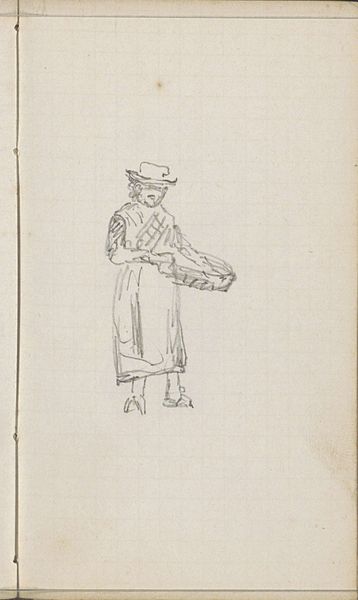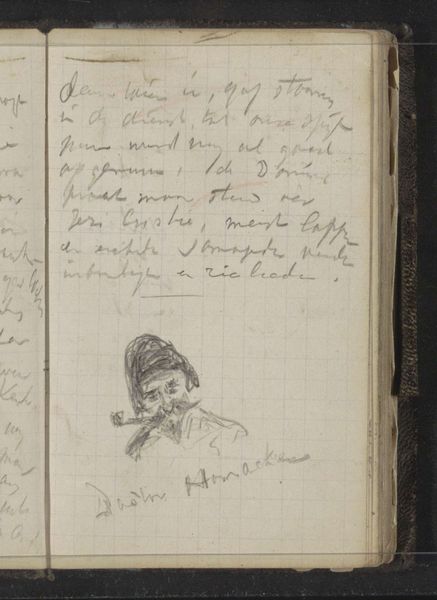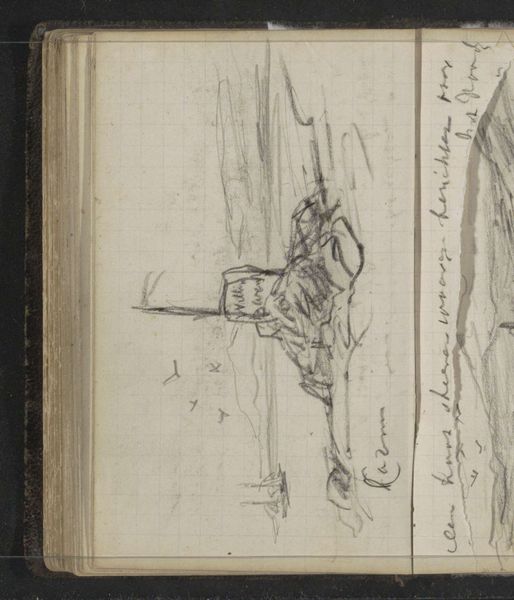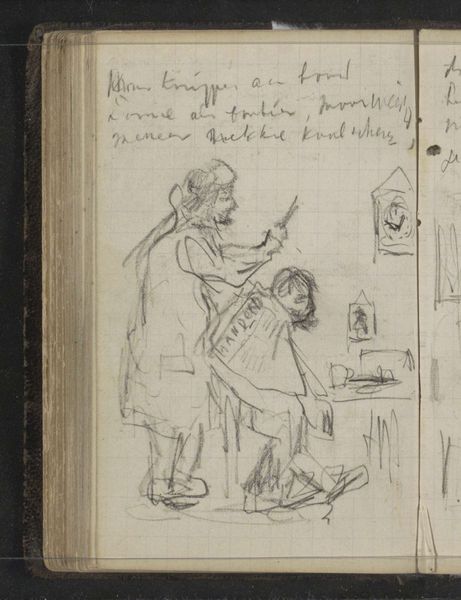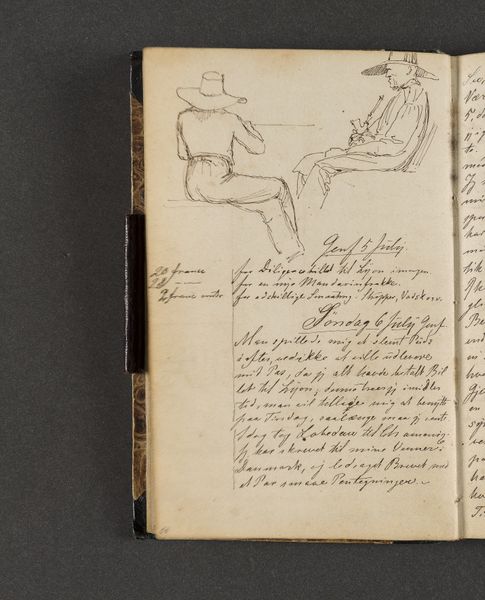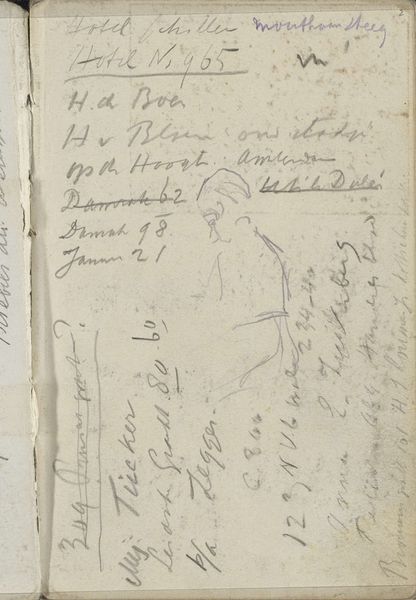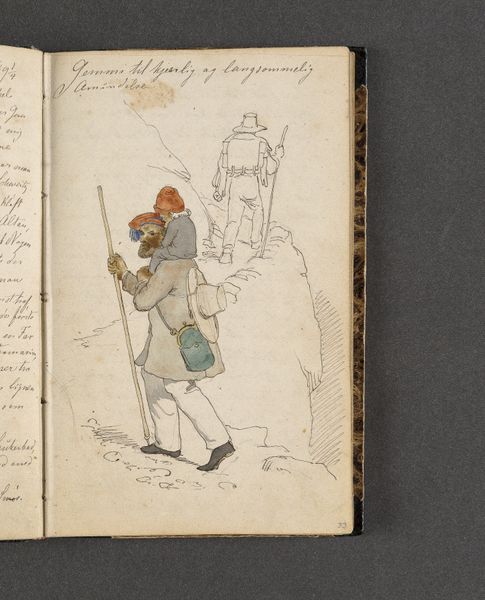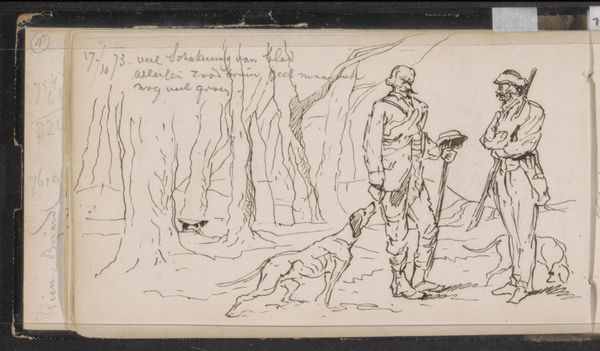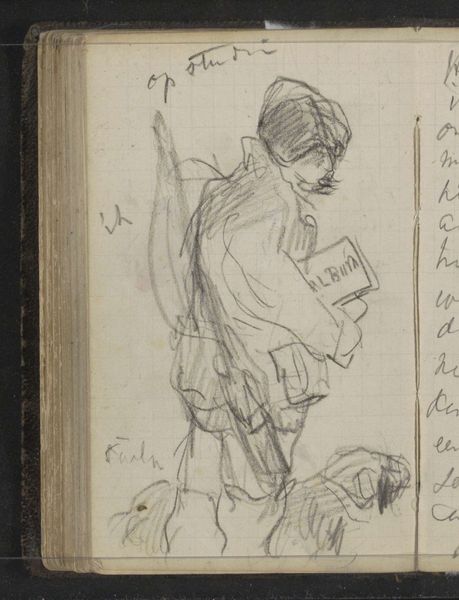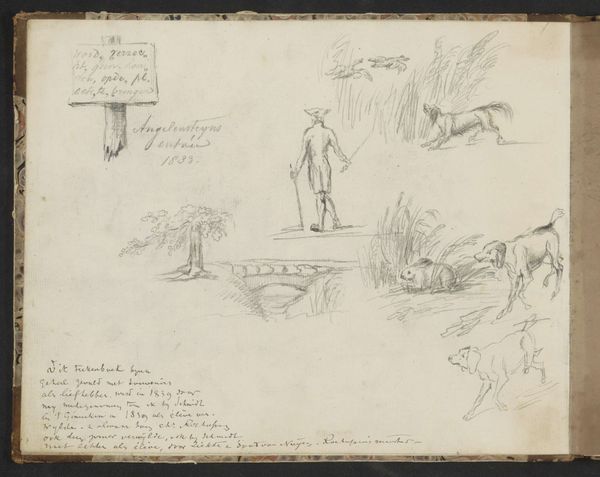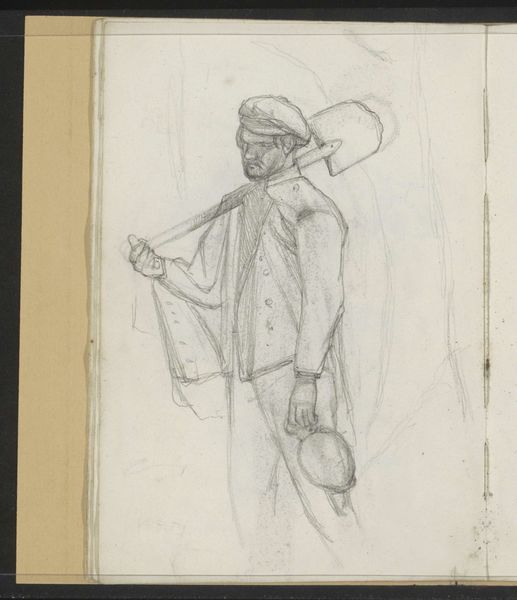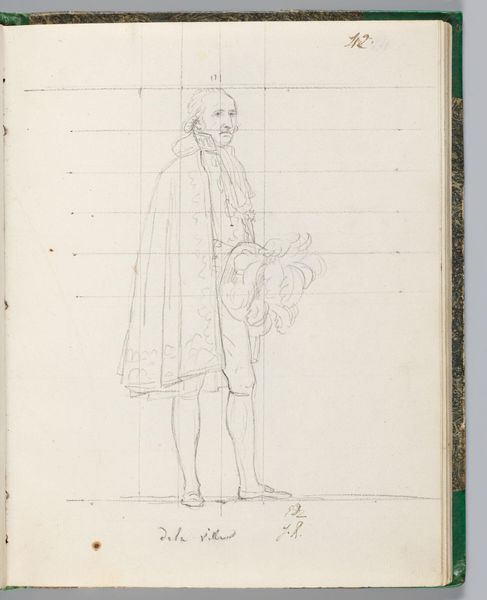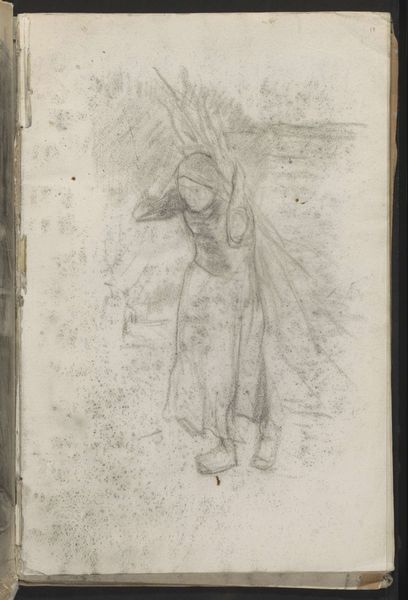
drawing, coloured-pencil, pencil
#
portrait
#
drawing
#
coloured-pencil
#
coloured pencil
#
pencil
#
watercolor
#
realism
Copyright: Rijks Museum: Open Domain
Curator: This drawing, "Pastoor Krul voor de schoener Willem Barentsz" by Louis Apol, likely from the 1880s, is deceptively simple. It looks like a quick sketch. I’m curious about its existence as an artifact itself – it appears to be a page torn from a sketchbook. Editor: Yes, I notice it's a page from what looks like a lined notebook, with faint grid lines and some handwriting bleeding through from another page, almost like a peek behind the curtain. What can we make of Apol's medium of choice here, pencil and colored pencil? Curator: The choice of a readily available, relatively inexpensive material like pencil tells us about accessibility, right? Sketchbooks weren’t precious objects, but working tools. I'd be curious about where Apol obtained the pencil, if we could trace it. Pencils changed dramatically over time, in terms of the materials of both the core and the encasement. Was he sketching 'en plein air'? What are your initial impressions? Editor: My initial reaction is it seems…utilitarian. Functional rather than aiming at beauty. Is this indicative of a broader shift away from strictly “high art” towards documenting everyday life or the labor involved? Curator: Exactly! This image's value, from my point of view, isn't just aesthetic. It’s about the labor involved in creating the artwork and portraying the labor of someone else. Krul, the subject, and the ship evoke maritime industries and trade, while Apol's quick strokes, done in what looks to be just a few moments, speaks of immediacy, but it also involved a process. Can the rough immediacy be tied back to other materialist concepts or shifts in the time period? Editor: I see, so by examining the materials and context, we’re able to gain more insight into not only the content but also the values of the artist and potentially the wider culture. It moves us beyond simply admiring its beauty or skill. Curator: Precisely. We examine how material realities shape artistic creation and reflect the wider social and economic structures of the time, inviting us to see it beyond merely a portrait or drawing.
Comments
No comments
Be the first to comment and join the conversation on the ultimate creative platform.
